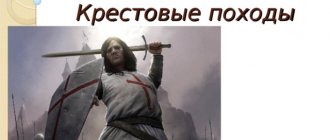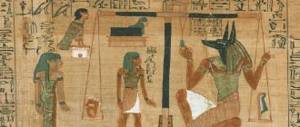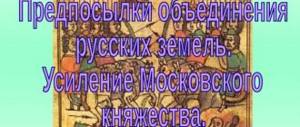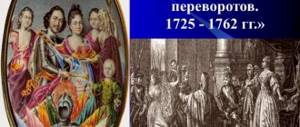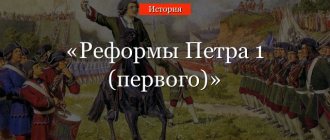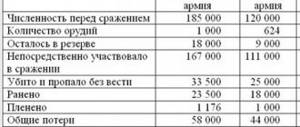North War
Teacher's story: So, let's move mentally to the 18th century. Sweden by the beginning of the century was the most powerful state in Northern Europe. Sweden felt itself to be the rightful owner of the Baltic coast. Accordingly, would it be advisable for a strong and developed country to give up its territories to Russia without a fight?- Based on this, highlight the main causes of the Northern War and name them.
— Peter was looking for allies to fight the Swedes.
— Look at the map, which closest neighbors could become allies of Russia?
-Yes, at the beginning of the 18th century, the main European states began the war for the “Spanish Succession” and could not intervene in the struggle for the Baltic, and Russia, in alliance with Denmark, the Polish-Lithuanian Commonwealth, Saxony (Northern Alliance), started a war with Sweden.
— During the Northern War, several stages can be distinguished. To list them, I suggest you watch a video about the progress of this war, take a closer look at each of the stages by filling out the table:
Stages of the Northern War
Stages
| Battle | date | Result |
| 1 | Battle of Narva | |
| 2 | Battle of the village of Lesnoy | |
| 3 | Battle of Poltava | |
| 4 | Prut campaign | |
| 5 | Naval battles at Cape Gangut | |
| 6 | Naval battles off Grengam Island |
- So, what is the first stage of the war? What events is it connected with? Did it end successfully or unsuccessfully for the Northern Alliance? To answer these questions, let's turn to the textbook (clause 4, paragraph 1, pp. 25-26).
-The swiftness of the actions of the young Swedish king took Peter I by surprise. Under these conditions, Peter I accelerated the signing of a peace treaty with Turkey and sent troops to the Swedish fortress of Narva, where a battle took place, which was called the “Battle of Narva”, and how it took place - we learn from the video, we will fill in the corresponding line of the table.
- Summarize. Near Narva, in 1700, the Swedish army defeated Russian troops. The Russian army suffered a heavy defeat: a significant amount of artillery was lost, heavy casualties were suffered, and the command staff suffered greatly. In Europe, the Russian army was no longer perceived as a serious force for several years.
-Why do you think Russian troops could not take Narva? Name the reasons for the defeat of the Russian army near Narva.
- Naturally, Peter I as a commander was not satisfied with such results of the battle. Imagine yourself in the role of commander in chief, what would you do to correct the situation and prevent further defeats for Russia?
- Let's check how close you were to the measures that Peter I took. To do this, you need to refer to the textbook (item 3)
— What measures taken by Peter I to strengthen the Russian army do you consider the most effective? (survey on mentimeter).
- Work through the textbook, find and write down the term “recruitment” that we came across.
- Draw a conclusion - what did the Russian army become in 1708-1709?
And this led to the first victories.
In 1702, the Russian army stormed Noteburg (Oreshok) at the mouth of the Neva. Considering the key role of this city in reaching the Baltic, Peter renamed it Shlisselburg (“key city”)
In 1703, St. Petersburg was founded on the Neva, which soon became the capital of Russia for more than two hundred years.
Then there were Dorpat (June 1704) and Narva (June 1704),
the same Narva that became the first failure in the war. The fall of Narva made the king very happy: “Narva, which had been brewing for four years, has now, thank God, broken through.”
Indeed, after actions in the Baltic states, the Russians practically completed their initial tasks - they reached the Baltic Sea and captured all the lands lost in the 17th century. Thus ended the first stage of the war.
Second stage - Battle of Poltava
— How do you think other countries, the rival country, reacted to the strengthening of Russia’s position?
— You are right, the strengthening of Russia’s military power aroused the fears of Charles XII. Charles XII, and he brought Poland out of the war, began to prepare an invasion of Russian territory.
-A major battle took place in the summer of 1708 near the village of Lesnoy (map).
-Using materials from the presidential library, characterize the military actions that took place near the village of Lesnoy by filling out the corresponding line of the table.
-It was decided to fight a general battle near Poltava.
-Using materials from the presidential library, describe the battle of Poltava. Determine the reasons for the victory of the Russian army in the Battle of Poltava by filling in the corresponding row of the table.
-How did this battle end for Russia, as you understood from the text you read? What reasons for the victory of the Russian army can be identified? Discuss in pairs. We will then share your thoughts with the whole class.
Great Northern War 1700–1721
In Peterhof there is a fountain with the sculpture “Samson tearing apart the mouth of a lion.” It was installed in honor of the 25th anniversary of the victory at Poltava. The figure of Samson appeared due to the fact that the Battle of Poltava took place on the day of Samson the Host. The lion is associated with Sweden, since this particular symbol is present on the country’s coat of arms.
During the lesson you will learn about the beginning of the Northern War, the Battle of Narva and the reform of the Russian army, the Poltava victory, the Prut campaign and the Nystad peace.
In November 1699, Saxony and Russia signed the Treaty of Preobrazhensky. His goal was to create a Northern Alliance to fight Sweden. Denmark later joined the union.
However, already in February 1700, the Elector of Saxony and the Polish king Augustus II besieged Riga, a city in Swedish Livonia. He expected that the city's residents would perceive his warriors as liberators. Augustus II wanted to get ahead of Russia in future territorial acquisitions. The siege of Riga dragged on for more than six months.
In August 1700, Denmark invaded the territory of the Duchy of Holstein-Gottorp. A few days later, King Charles XII of Sweden and his army landed near Copenhagen. This came as a surprise to the Danes. On August 7, Denmark was forced to conclude the Peace of Travendal with Sweden and withdraw from the Northern Alliance.
Charles XII sent troops into the Baltic states and forced Augustus II to lift the siege of Riga.
Peter I was taken by surprise by the actions of the Swedish king. The signing of peace with Turkey was accelerated. The Peace of Constantinople ensured the neutrality of Turkey and Peter I could enter the Northern War.
The goal of the Russian ruler was to return the original Russian lands. Under the terms of the Preobrazhensky Peace Treaty with Saxony, Russia was supposed to receive the lands of Ingria. Between them and Estland there was a large Swedish fortress called Narva, which became a target for Russia.
However, already at the very beginning of the campaign against Narva, Peter I encountered difficulties:
there was a shortage of fodder and provisions;
the movement of convoys was difficult due to rainy weather;
The soldiers' uniform was poor.
Charles XII sent his army to Narva. He managed to force the Russian army to retreat. Foreign officers who served in the army of Peter I went over to the enemy’s side. The Russian army suffered enormous human and material losses. Including most of the artillery.
After the victory at Narva, Charles XII decided that Russia would refuse to participate in the war. The Swedish army was sent to the Polish-Lithuanian Commonwealth. However, the struggle with Augustus II dragged on.
Russia had no intention of stopping hostilities. In 1702, the Noteburg fortress was taken, later renamed Shlisselburg - “key city”. It was of great strategic importance, as it made it possible to control all movement along the Neva. The Russians later gained control of the mouth of the Neva. In May 1703, the Peter and Paul Fortress was founded here, marking the beginning of the construction of St. Petersburg.
Fort Kronshlot was built to block the entrance to the Neva for enemy ships. Its name translates as Crown Castle.
After the Narva defeat, Peter I realized the need for reforms in the army. The basis of the new army was the Semenovsky and Preobrazhensky regiments.
In general, Peter I began transformations in this area back in 1699. From that time on, the army became regular. Streltsy regiments were replaced by regiments of the new formation. The soldiers had a uniform uniform. Green caftans were worn by infantry, and blue caftans by cavalry.
Equipment and small arms were uniform.
Since 1705, the army began to be formed on the basis of conscription. A certain number of recruits were assigned from each tax-paying class. For example, in 1705, every 20 households had to send one recruit to lifelong service.
Already by 1708, the Russian army consisted of 113 thousand armed soldiers.
Peter I understood the need to create a military economy. The Tsar handed over the state-owned Nevyansk plant, located in the Urals, to the gunsmith Nikita Demidov. Later, the Demidovs built the first large metallurgical plants that worked for the needs of the army.
State manufactories were also created, which produced gunpowder, weapons and cloth for uniforms.
Schools for training officers appeared - artillery, navigation, engineering. Nobles were sent abroad for military training. Thanks to this, Peter I was able to refuse to hire foreign military specialists.
In 1716, the Military Regulations were published, which defined the service, rights and responsibilities of military personnel.
Peter I paid special attention to the construction of the fleet. The first ship of the Baltic Fleet was the frigate "Standart", launched in August 1703.
While Peter I was strengthening his army, Charles XII withdrew the Polish-Lithuanian Commonwealth from the war and began preparing an attack on Russia.
In the summer of 1708, the Swedish king set out in the direction of Smolensk. However, something forced him to abandon the original plan for a campaign against Moscow. Charles XII turned his army towards Ukraine.
On September 28, 1708, a battle took place near the village of Lesnoy. The Russian army managed to defeat Levengaupt's corps, which was heading to the aid of Charles XII, and captured a convoy with provisions. Later, Peter I called this battle “the mother of the Poltava victory.” The Swedes were left without ammunition, their strength was exhausted. In addition, the battle of Lesnaya took place exactly 9 months before Poltava.
Charles XII was supported by the Zaporozhye hetman Ivan Mazepa. The Swedish king also counted on the help of the Crimean Khan and the Turkish Sultan. However, these hopes of Charles XII were not fully realized. Mazepa was able to bring only about five thousand Cossacks. While Peter I declared him a traitor and attracted most of the Cossacks to his side.
In April 1709, the Swedes began the siege of Poltava. The fortress garrison showed unprecedented courage in holding back the enemy's onslaught. In mid-May, the Russian army approached Poltava. It was headed by Boris Sheremetev and Alexander Menshikov. The general leadership of the troops was carried out by Peter I.
On June 27, 1709, the order of Peter I was read to the Russian army: “Warriors! The hour has come that will decide the fate of the Fatherland. And so you should not think that you are fighting for Peter, but for the state entrusted to Peter, for your family, for the Fatherland, for our Orthodox faith and church.” One of the most famous battles in Russian history began.
The cavalry under the command of Menshikov repelled the attack of the Swedish cavalry. The enemy's infantry attack also did not bring results. The combined actions of Russian infantry and artillery forced the enemy to retreat. The remnants of the Swedish army tried to cross the Dnieper, but only Charles XII managed to reach the possessions of the Ottoman Empire.
The Poltava victory was a turning point in the Northern War. It strengthened Russia's military prestige.
After the victory at Poltava, Denmark and Poland renewed their alliance with Russia. Later Prussia joined them. In 1710, the Russians managed to capture Riga, Revel and Vyborg. The eastern coast of the Baltic was liberated from the Swedes.
Charles XII convinced the Turkish Sultan to declare war on Russia. In July 1711, the Turkish-Crimean army surrounded the Russian camp on the Prut River. At this time, Peter I was also there. The Turks launched several attacks, but all of them were unsuccessful.
Peter I, who was surrounded by Turkey, twice sent negotiators with proposals for peace. As a result, diplomat Pyotr Shafirov managed to sign the Prut Peace Treaty.
Under its terms, Russia agreed to return Azov to Turkey;
destroy the Taganrog fortress;
do not interfere with the return of Charles XII to Sweden;
do not keep troops in the Polish-Lithuanian Commonwealth.
Turkey, for its part, freed the Russian army from encirclement and retained its banners and artillery.
Russian military operations in 1713 brought victories in Finland and Pomerania. The Swedes were pushed back to the Scandinavian Peninsula. However, they still had a strong fleet in the Baltic. Peter I had to fight with him.
On July 27, 1714, the Russians managed to defeat the Swedes at Cape Gangut. All Swedish ships participating in the battle were destroyed. The royal court, fearing a Russian invasion, hastily left Stockholm. The Battle of Gangut was the first victory of the Russian fleet.
On July 27, 1720, near the island of Grengam, the Russians won another victory over the Swedes. This Russian success forced Sweden to enter into peace negotiations.
In August 1721, Russia and Sweden signed a peace treaty in Nystadt. According to its terms, Russia returned Finland to Sweden, except for Vyborg;
received lands on the Baltic coast from Vyborg to Riga.
The Treaty of Nystadt provided Russia with access to the sea, and it became a maritime power.
Foreign trade has developed.
Also, the successful outcome of the war changed Russia's international position. It became on the same level as the leading powers; no international decisions were made without Russia’s participation.
Let's summarize.
In 1700, the Great Northern War began.
After the defeat at Narva, Peter I realized the need to reform the Russian army.
On September 28, 1708, a battle took place near the village of Lesnoy, which ended in victory for Russia.
On June 27, 1709, the Battle of Poltava took place.
In August 1721, Russia and Sweden signed a peace treaty in Nystadt.
Victory in the Northern War made Russia one of the great European powers.
